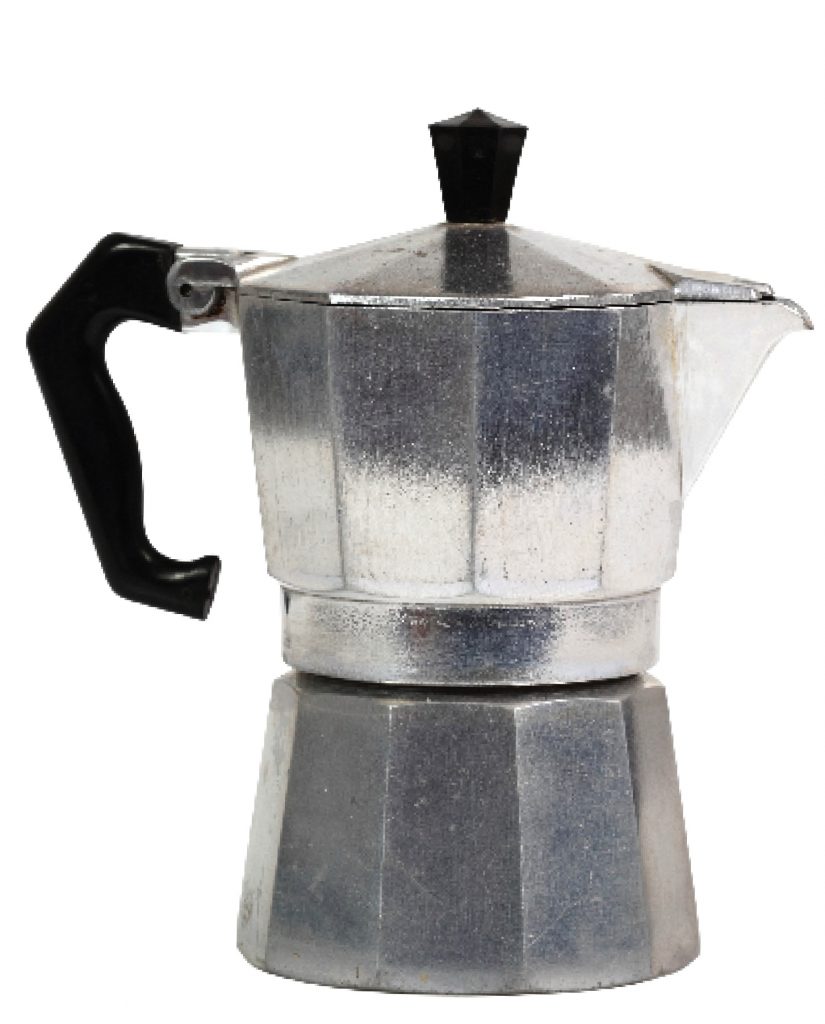The ‘Moka Express’, as the makers call it, or la machinetta as it is commonly known, has been a fixture in Italian kitchens since the 1950s…
 Originally designed in 1933, at a time when many Italians were having to count their lire and, consequently, their trips to the local café, the Moka pot (the manufacturer’s name is the ‘Moka Express’) is an ingenious little device that produces crema-rich, espresso-like coffee by the simple means of causing steaming water to rise through a chamber of coffee granules and into an upper chamber, where the resultant coffee drink is collected – it’s a sort of steam engine for coffee.
Originally designed in 1933, at a time when many Italians were having to count their lire and, consequently, their trips to the local café, the Moka pot (the manufacturer’s name is the ‘Moka Express’) is an ingenious little device that produces crema-rich, espresso-like coffee by the simple means of causing steaming water to rise through a chamber of coffee granules and into an upper chamber, where the resultant coffee drink is collected – it’s a sort of steam engine for coffee.
The idea, apparently, came when engineer Alfonso Bialetti was watching his wife do the laundry using a similar, albeit rather larger, device. He promptly commissioned the inventor Luigi de Ponti to develop the prototypes. And, to make sure no-one stole what was really a very simple idea, he also commissioned the artist Paul Campani to design the machine’s logo, or mascot, l’omino coi baffi, ‘the little man with the moustache’.
Commonly known in Italy as la machinetta (the small machine) the Moka pot brought café-quality coffee into the home of anyone who could generate a decent fire. Needless to say, by the 1950s it had become a fixture in nearly every Italian home and is now commonplace throughout Europe and South America.
